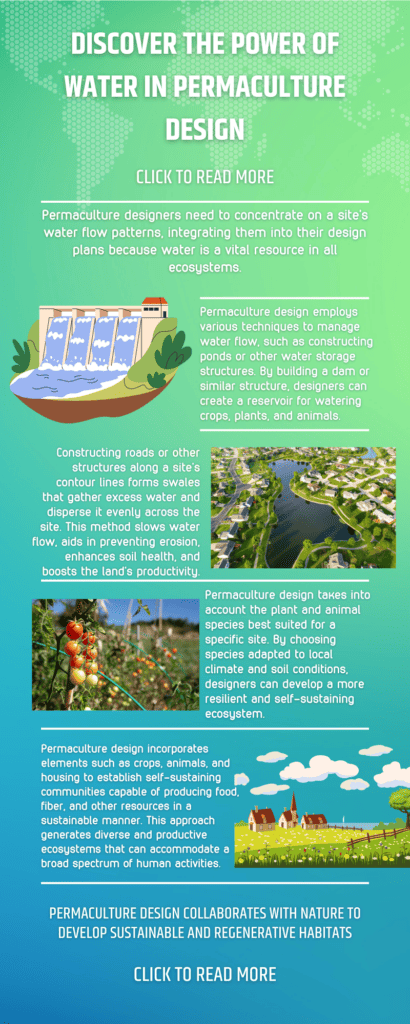
Hey there, fellow nature lovers! Have you ever heard of permaculture? No, it's not a new type of farming equipment. It's actually a design system that focuses on creating sustainable and regenerative human habitats that work with nature rather than against it. And at the heart of permaculture design is the concept that water is the foundation of the design process.
Water Is The Foundation
Effective management of water flow is crucial for maintaining a site's health and productivity, as it helps prevent soil compaction, plant death, and erosion. As such, permaculture designers need to concentrate on a site's water flow patterns, integrating them into their design plans because water is a vital resource in all ecosystems.
The design process commences with an analysis of a site's water flow pattern. Even seemingly flat sites possess water flow patterns that can be harnessed to establish more productive and efficient ecosystems. By understanding how water moves through a site, designers can pinpoint areas where water can be intercepted and stored for future use.
Permaculture design employs various techniques to manage water flow, such as constructing ponds or other water storage structures. By building a dam or similar structure, designers can create a reservoir for watering crops, plants, and animals. The stored water can be distributed using gravity-fed irrigation systems, eliminating the need for energy-consuming pumps.
Constructing roads or other structures along a site's contour lines forms swales that gather excess water and disperse it evenly across the site. This method slows water flow, aids in preventing erosion, enhances soil health, and boosts the land's productivity.
Permaculture design takes into account the plant and animal species best suited for a specific site. By choosing species adapted to local climate and soil conditions, designers can develop a more resilient and self-sustaining ecosystem. Strategies like crop rotation and companion planting contribute to systems that are less vulnerable to disease and pest infestations.
Permaculture design incorporates elements such as crops, animals, and housing to establish self-sustaining communities capable of producing food, fiber, and other resources in a sustainable manner. This approach generates diverse and productive ecosystems that can accommodate a broad spectrum of human activities.
In summary, permaculture design collaborates with nature to develop sustainable and regenerative habitats. By understanding and working with a site's natural water flow patterns, designers can create regenerative and sustainable ecosystems that support various human activities. Focusing on efficiency, diversity, and resilience, permaculture design presents a potent tool for fostering a more sustainable and equitable world. Let's seize the opportunity and begin designing!
Embed this infographic on your site.

